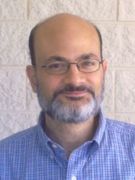
Please Note: The content on this page is not maintained after the colloquium event is completed. As such, some links may no longer be functional.
Mohamed Younis
University of Maryland Baltimore County
Federating Disjoint Wireless Sensor Network Segments
Wednesday, March 27, 2013
Building 3 Auditorium - 11:00 AM
(Coffee and cookies at 10:30 AM)
Wireless sensor networks (WSN) can increase the efficiency of many real-life applications through the collaboration of hundreds of miniaturized sensors which can be deployed unattended in harsh and inhospitable environments. While such deployment eliminates/reduces human intervention and provides fully-automated data gathering systems, WSNs are still prone to sensors failure which not only can degrade the quality of coverage but also disrupt the data traffic. To address such a problem, conventional approaches deploy redundant nodes during network setup and reconfigure the network topology to establish alternate data paths. However, sometimes the network suffers a large scale damage involving many nodes and gets partitioned into multiple disjoint segments. For these cases, a provisioned approach for tolerating occasional failures at the network design level will not be effective. A similar scenario is when an application can be leveraged by engaging a number of standalone WSNs. For example, the disaster response may involve collaboration among multiple government agencies and may need to combine the services of their autonomously-operating WSNs in the search-and-rescue process. The main goal is to quickly repair a structurally damaged WSN or link multiple disjoint WSNs with the least resources and overhead. This process is called a federation. Federation of multiple network segments is characterized as short lived and rapid in order to ensure responsiveness to application needs until a more stable solution is developed or the need for combining the network services ends. This talk will analyze the federation problem, categorize possible solutions and present our research results on how repositioning/deployment of mobile nodes could effectively and efficiently achieve the federation objectives. For more information see: esnet.cs.umbc.edu.
Mohamed Younis is currently an associate professor in the department of computer science and electrical engineering at the university of Maryland Baltimore County (UMBC). He is also the Director of the Embedded Systems and Network lab. Before joining UMBC, he was with the Advanced Systems Technology Group, an Aerospace Electronic Systems R&D organization of Honeywell International Inc. While at Honeywell he led multiple projects for building integrated fault tolerant avionics and dependable computing infrastructure. Dr. Younis' technical interest includes network architectures and protocols, wireless sensor networks, embedded systems, fault tolerant computing, secure communication and distributed real-time systems. He has published over 180 technical papers in refereed conferences and journals. Dr. Younis has five granted and three pending patents. In addition, he serves/served on the editorial board of multiple journals and the organizing and technical program committees of numerous conferences. Dr. Younis is a senior member of the IEEE and the IEEE communications society.
IS&T Colloquium Committee Host: John Donohue
Sign language interpreter upon request: 301-286-7040
